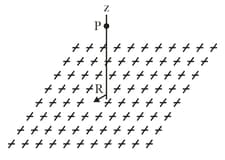The figure given below is a section of a conducting rod of radius and length inside a thin-walled coaxial conducting cylindrical shell of radius and the (same) length The net charge on the rod is that on the shell is . What are the (a) magnitude and (b) direction (radially inwards or outwards) of the electric field at radial distance What are (c) and (d) the direction at What is the charge on the (e) interior and (f) exterior surface of the shell?
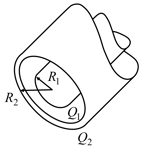


Important Questions on Gauss' Law
In figure ,
An electron is shot directly away from a uniformly charged plastic sheet, at speed, . The sheet is nonconducting, flat, and very large.
In figure ,
The electron's vertical velocity component, versus time , until the return to the launch point is given.
What is the charge density of the sheet's surface?
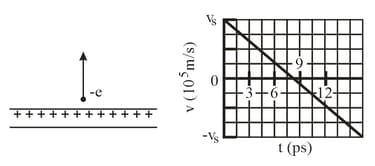
An unknown charge sits on a conducting solid sphere of radius . If the electric field from the center of the sphere has the magnitude and is directed radially inwards, then
what is the net charge on the sphere?
what is the charge density?
A charge of uniform linear density is distributed along a long, thin, nonconducting rod. The rod is coaxial with a long conducting cylindrical shell (inner radius and outer radius). The net charge on the shell is zero.
What is the magnitude of the electric field from the axis of the shell?
What is the surface charge density on the
inner surface of the shell?
outer surface of the shell?
the cavity wall and the outer surface?
The figure gives the magnitude of the electric field inside and outside a sphere with a positive charge distributed uniformly throughout its volume. The scale of the vertical axis is set by . What is the charge on the sphere? What is the field magnitude at
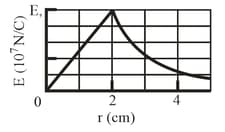
ln the figure, two large, thin metal plates are parallel and close to each other. On their inner faces, the plates have excess surface charge densities of opposite signs and magnitude In unit vector notation, what is the electric field at points, to the left of the plates,
to the right of them and between them?
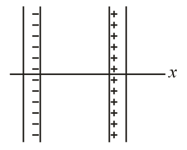
In figure a small circular hole of radius has been cut in the middle of an infinite, flat, nonconducting surface that has uniform charge density. A -axis, with its origin at the hole's center, is perpendicular to the surface. In unit vector notation, what is the electric field at point at ?
